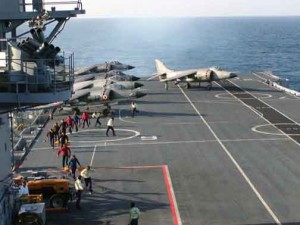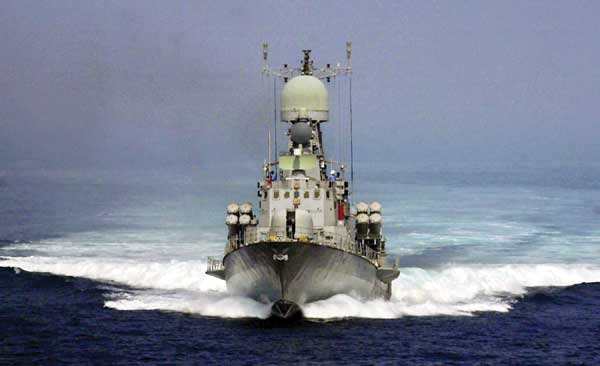History is seldom a true chronicle of past events. Nations generally interpret history to make their own appear nobler, grander, more glorious or altogether different from current interpretations of it and trivialise that of traditional adversaries. New research and facts entail revising settled beliefs, sometimes painfully.
It was commonly accepted in Europe at one time that the earth was flat! Indians always knew that the earth was round. But they were slightly in error in believing that it was poised on the horns of a bull, and the shaking of its head, presumably to keep off the flies, was what caused earthquakes!
 Even the most objective academics bring to the writing and interpretation of history, the limitations of their own intellectual or imaginative capacity and personal and cultural experiences. Revision of history per se, is not objectionable if new facts require it.
Even the most objective academics bring to the writing and interpretation of history, the limitations of their own intellectual or imaginative capacity and personal and cultural experiences. Revision of history per se, is not objectionable if new facts require it.
Enquiry into maritime history begins with events on land and then proceeds through coastal settlements, excavation of artifacts, popular accounts and beliefs co-related with ancient records, shipwrecks and their cargoes. Complicating nuances of history written by colonising power come into play when we attempt to piece together the maritime history of the Indian sub-continent and neighbouring countries.
European Perspective of History
Due to global European colonisation, most of the extant historical accounts are from a European, more particularly in India, English perspective. Records of competing seapowers, such as the Portuguese or the French, though available to historians, are given less weightage and prominence due to, among other things, language considerations and the desire to glorify the role and contribution of the invading or colonising victor and downplay that of the defeated or colonised.
European Sea Battles
The primary battles at sea in the nearly five hundred years of colonisation were essentially between European sea powers in European waters. Warfare elsewhere was mostly secondary to, and in extension of hostilities in Europe until relatively modern times when Japanese sea power began to rise in the Pacific and challenged the United States. Major defeat at sea of a belligerent in the European theatre, usually sealed his fate in far distant lands as well, dependent as colonial powers were on their control of the seas for acquiring and retaining their colonies.
Ancient trade in the Indian Ocean
The nature of seafaring differed considerably in each of the main ocean areas. Europe in the 14th and 15th centuries lived at the subsistence level, with harsh economic and social conditions and limited tradable resources, to change only with the acquisition of colonies and later, the coming of the industrial revolution in the late 19th century.
The western alliance system, led by the United States, is again trying to re-order global power structures in a New World Order, much as was done in 1945 at the end of the Second World War on the basis of “Victors Spoils” and in preparation for the looming Cold War.
Basic activities like agriculture and forestry were the main occupations of the settled populations and though seafaring had developed, there was little to offer by way of trade overseas. And trade with whom?
America was still to be discovered by Europe. Overland contacts and accounts of travelers suggested enticing opportunities for riches from oriental lands if a sea route could be found. Conditions were right to mount exploratory expeditions. These were to lead to the openings to America, Africa and finally to India and also to the race for colonies by the English, Spanish, Portuguese, French, Dutch and smaller seapowers. Even little Belgium came to possess huge colonies in central Africa!
In the Indian Ocean, by contrast, the use of the seas from times immemorial was almost entirely for trade. Later, Buddhist monks and Muslim preachers carried their religious message along with the traders, as did the Christian missionaries. But, despite vast seaborne trading activity ranging from China in the east to Africa, Arabia and the Mediterranean lands in the west, no dominant sea power existed or controlled the oceans, nor was there impetus to do so, until the arrival of the Europeans. The great historical empires of India and China were self-sufficient and rich within themselves and no necessity was felt to adventure overseas for resources and colonies. Such Indian and Chinese colonies as came about in south-east Asia were mostly settlers in the wake of religion or trade. This applied too to the Arab sailors in their dhows, who worked closely with the merchants of Gujarat and the Malabar Coast.
Chinese Explorations and Indian Trading Communities
New research is bringing out details of extensive voyaging by the Chinese Zheng Ho in the Pacific and the Indian Oceans in the early 15th century and the presence of settled communities of Indian traders in SE and East Asia, and the Gulf. Both coasts of India also had resident Mediterranean Jews, Arabs, Chinese and others, being partners in trade and interacting amicably to mutual benefit. Coins and artifacts with Greek and Roman inscriptions continue to be found, even on the east coast. It is widely accepted that the pilot who guided Vasco da Gama to India was Gujarati or Arab. Perhaps he was an Arab settled in Gujarat, as the monsoon winds usually determined where merchants and sailors lived ashore over many months awaiting favourable weather to return home with their cargoes.
Zheng Ho’s ships far exceeded in size and numbers, those of Columbus when he set out for, as he supposed, India, and there are claims that the Chinese discovered America across the Pacific much before the Europeans ventured there. Records of Indian sailing expeditions are on a less grand scale, but the culture and place names in South-east Asia testify to numerous and large Indian settlement there.
The Last Hundred Years
Global power equations have seen many upheavals over years, the most recent following the dissolution of the Soviet Union. To understand present strategic arrangements and impulses of new players such as India, Brazil etc. to power, it is perhaps sufficient to consider the events which have shaped world affairs over the last hundred years or so and which continue to cast their shadow over Indian strategic perceptions.
Apart from the two World Wars, these include the Cold War, the rise of China, the proclaimed and enforced monopoly on nuclear weapons by the five permanent members of the Security Council, the disintegration of the Soviet Union and very significantly, the Sept.11, 2001 terror attack on the continental United States; significantly, because it posed a threat to global United States interests in a manner it could not address by the usual method of applying overwhelming military force and which obliged it to reassess its threat response options in a holistic way.






The admiral has built up a case only to spoil it in the para on sea power at the end. He talks of the long term and surprisingly concludes that India’s area of interest is restricted to the Indian Ocean. Sir, Indian Ocean is the current area of interest for India. We have to begin preparing for protecting our interests gradually and surely in more areas. Any doubts ? Banish them.